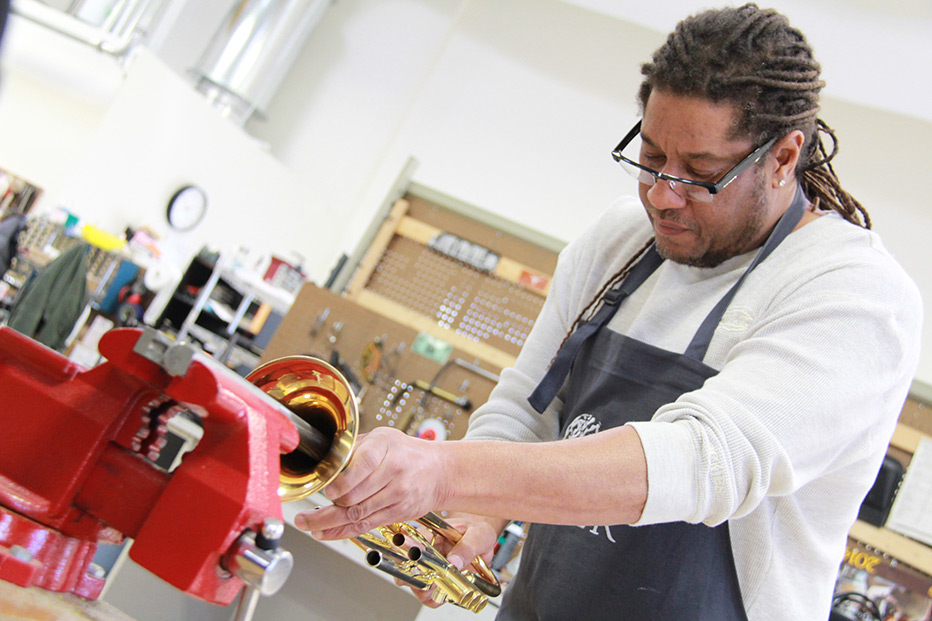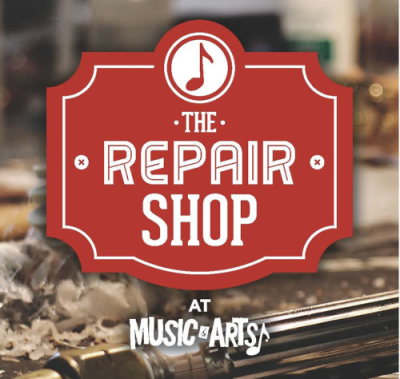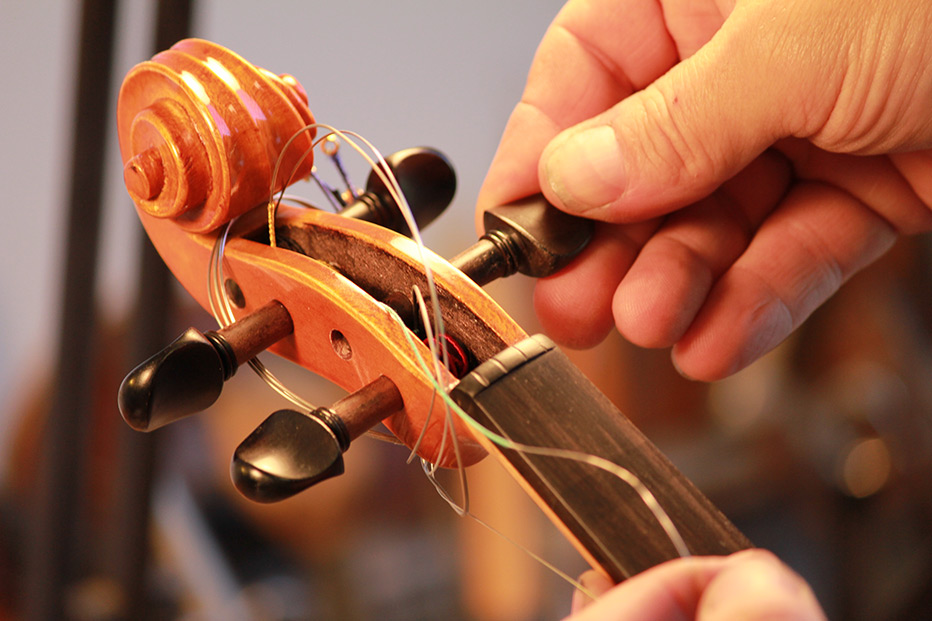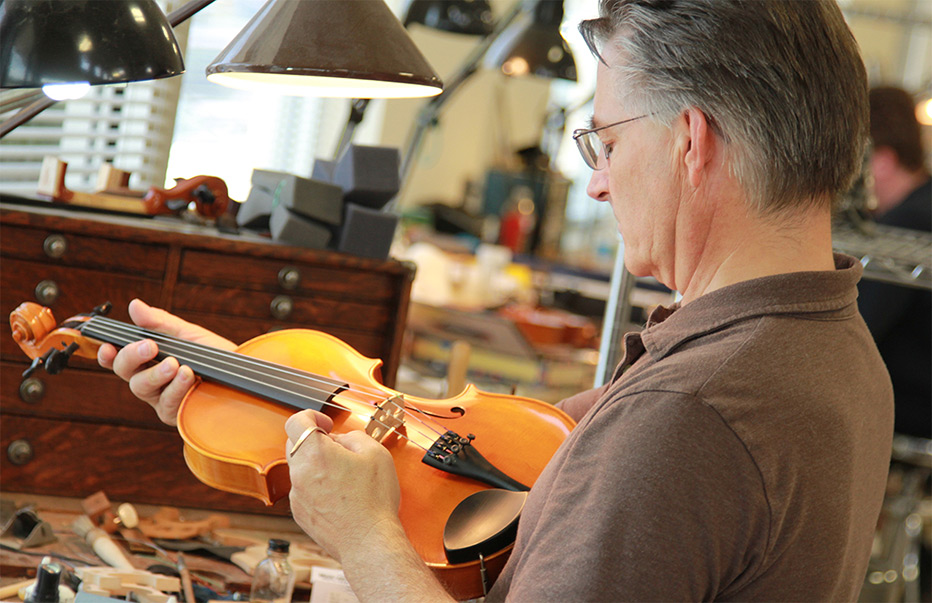April 09, 2015
Common Repairs for the Clarinet


If you’re an aspiring musician, one of the most important lessons that you must learn is that proper care and maintenance of your instrument will help you maintain consistent sound quality and save money in the long run. If the instrument you’re learning to play is the clarinet, it’s good to know how to keep your instrument in good condition and how to tell when something is broken so you can get it repaired right away. We’ve put together this helpful article to address some of the most common repairs you might need as a clarinetist, and how to tell when you need them. We’ll also get into how to properly take care of your clarinet so that you can hopefully avoid having to make these repairs for as long as possible.
Leaks
Leaks can occur at several places on a clarinet. If the leak is happening at the tone holes, you’re most likely not using the pads of your fingers when you play. Beginners, especially, try to cover the tone holes of their clarinet with the tips of their fingers instead of the pads. This often allows air to leak. If, on the other hand, there’s an air leak in the pads and/or joints of the instrument, you should probably go to an experienced repair technician. A professional instrument repairman can check for these leaks quickly and easily. Of course, you can find out if you have a leak in the pads or joints yourself by conducting a little blowing test on the upper and lower joints of the instrument. If the joints don’t stay together, you’ve found your leak. If your clarinet is leaking air because it’s seriously cracked, which happens more with wooden clarinets, it may be time to purchase a new clarinet. If the crack in your clarinet is small enough not to let air through, then a repairman can fill in the crack before it gets worse. Although repairs for serious cracks exist, your clarinet may never sound the same as when you got it.
One cause of clarinet cracks is exposure to extreme temperatures and humidity. It’s incredibly important that you keep your instrument stored in an environment that’s neither too hot nor too cold, and neither too dry nor too humid. Wooden instruments are very sensitive to changes in temperature, and the damage can occur quickly. Another potential cause of clarinet cracks is being dropped, kicked, bumped, or in any other way physically harmed. Make sure to always keep your clarinet in its case to protect it from these kinds of harmful events.
Pads
To know if your clarinet pads need to be replaced, you need only look. If the pad is starting to look old, discolored, or tattered, you can assume that it’s probably leaking. If the pads on your clarinet have become loose or unattached, you can easily glue them back into place. There are many different adhesives that you can use, including sealing wax, hot glue, or micro cement. If you need to replace your pads, some experts recommend using cork pads because cork is less affected by water. All of the pads on the top joint except the middle ring pad should be cork because they will help you to project a better sound. Cork pads also last much longer than skin pads.
Noise
There are several reasons why you might be hearing unusual noise from your clarinet. If a cork bumper has fallen off, then pieces of your instrument may be coming into contact that aren’t supposed to. Any metal on metal or wood on wood contact will cause a noise and should be immediately corrected. If your keys are bent, they can contact other keys and produce a noise. This, too, should be immediately corrected. The most common cause of noise, however, occurs when the layer of skin which connects the pins which connect the left-hand levers to the right-hand keys wears out or falls out. This can be expected to occur about once per year and can be noticed when playing the low E and low F# notes. When this occurs, simply take your clarinet in to a qualified professional, and they should be able to rectify the situation cheaply and quickly. You’ll notice that your instrument will feel much tighter and the excess noise should have gone away.
Springs and Rings
Springs on a clarinet can slip out of place, bend, or break. When this happens, it’s important to have them replaced quickly if you want to be able to play your instrument. This is, unfortunately, a repair that most cannot do themselves, as the different springs all require different tensions.
The clarinet has what are called tenon rings. These are the circular pieces of metal that surround the wood at the bell, barrel, and lower joint sections of the instrument. It’s important that the tenon rings be snug, as they are meant to prevent the wood from cracking. If a tenon ring is able to be slipped off, then you should address it immediately. Fortunately, there is a simple solution. Just place a paper shim between the ring and the wood to keep them snug.
Overhaul
Every now and then, you’ll need to have your clarinet overhauled. You should do so if your instrument has a serious issue or several minor issues. When your clarinet is overhauled, a repair person fixes everything at once. This process often involves having the instrument stripped down so that each individual piece and issue can be addressed. During an overhaul, any developing cracks are filled and all the pieces of the clarinet are cleaned and replaced, as needed. This means that any wear and tear you might be experiencing from the pads, corks, or springs can be addressed. Once every piece of the instrument is as it should be, the clarinet will be carefully reassembled and presented to you in proper working condition.
These repairs may not be uncommon, but not every technician is qualified to handle them. For this reason, you should learn how to find a qualified repair technician, especially if you’re not in touch with one already.







